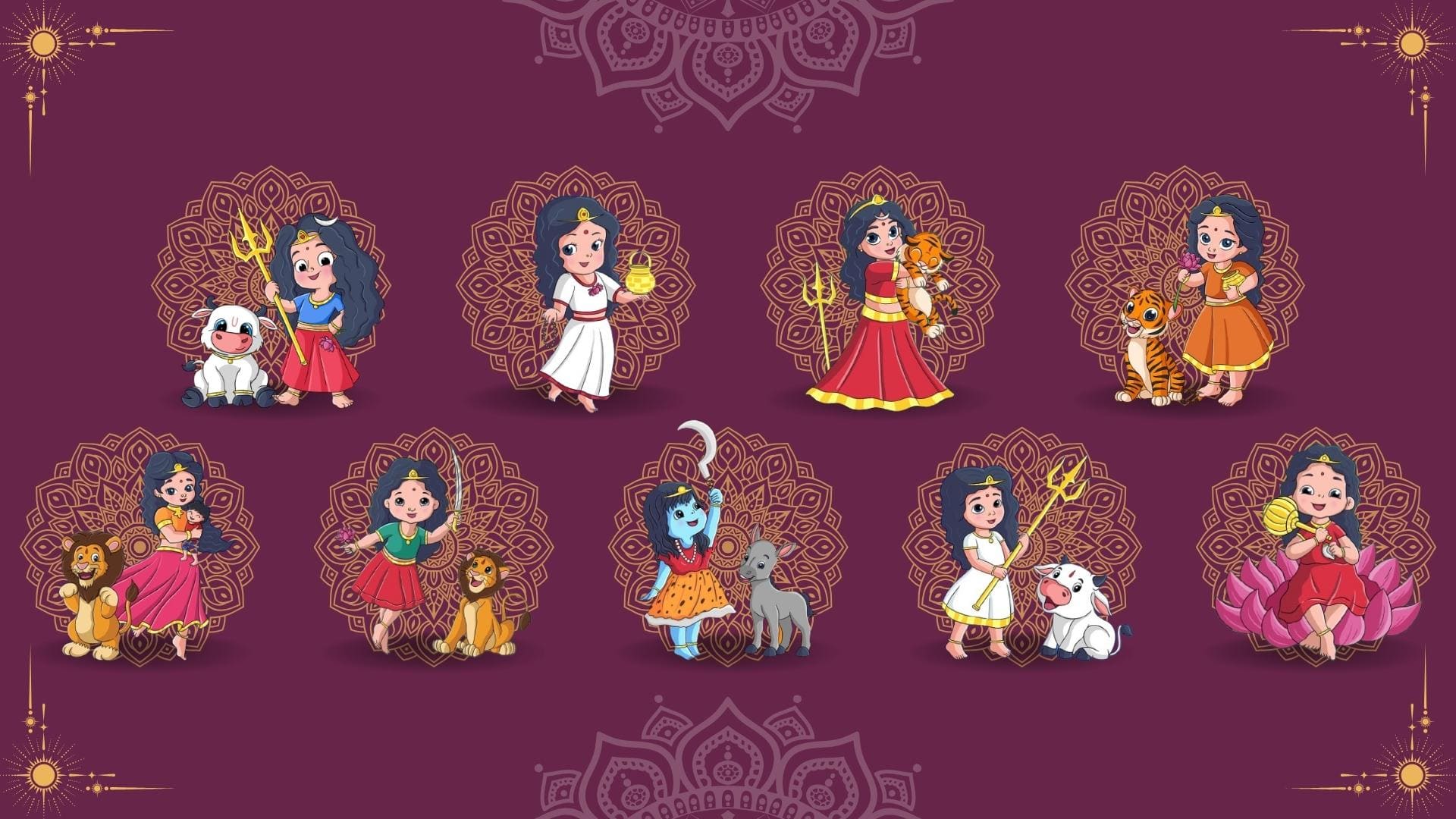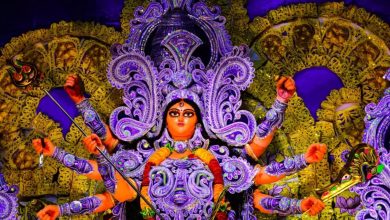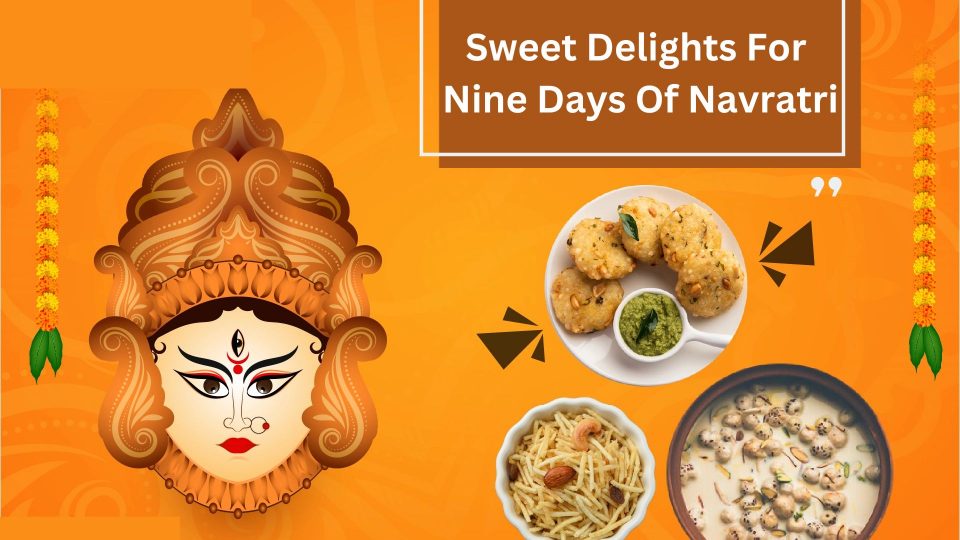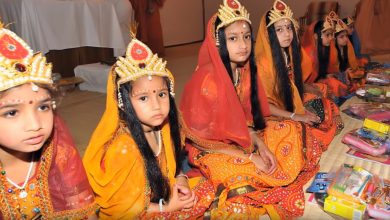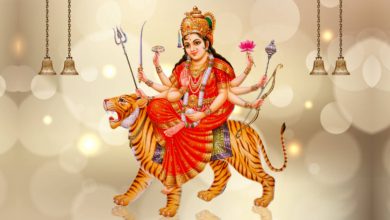The nine days of worship of Goddess Durga, Shardiya Navratri started on April 9, 2024, and will last till April 17, 2024. Anyone who worships Goddess Durga during Navratri 2024 or these nine days is said to gain peace, happiness, and prosperity since the goddess removes all of their problems.
Nine different manifestations of Goddess Durga are worshipped during the course of Navratri.
According to the Hindu calendar, this festival begins in the fall with the Ashwin Shukla Paksha Pratipada and is widely celebrated all around the world, particularly in Maharashtra, Bengal, and Gujarat.
Why Is Navratri Festival Celebrated?
The Navratri festival has a unique meaning and special significance. Four times a year, the festival of Navratri is observed: Magh Navratri (winter; January), Chaitra or Vasanta (spring; March–April), Ashadha (monsoon; August), and Sharadiya (autumn). Shardiya Navratri festival represents the triumph of truth over lies. There are two mythological stories related to it in the scriptures:
According to the first story, Goddess Durga killed a demon by the name of Mahishasura who had asked Lord Brahma for a blessing that no deity, demon, or human being could ever kill him. Mahishasura began spreading fear after receiving the blessing.
Then, Mahishasura’s killer, Goddess Durga, was born. The Trilok—earth, heaven, and hell—was shaken by a nine-day-long battle between Goddess and demon. According to various legendsMahishasura was particularly cunning and clever since he constantly switched up his appearances during the battle to mislead the Goddess. However, on the tenth day, when the demon took the shape of a buffalo, the Goddess Durga pierced his chest with her “Trident,” instantly killing him.
In accordance with another story, Lord Ram spent nine days worshipping the goddess Durga prior to his battle with Ravana to rescue Mother Sita from Lanka. She blessed him with victory because she appreciated his loyalty and was pleased with his devotion. Lord Ram killed Ravana on the tenth day, taking control of Lanka. And this day is observed as Vijayadashami or Dussehra.
Also Read: Navratri Kanjak Puja: Importance and How To Do It?
9 Avatars of Maa Durga And Teachings of Maa Durga
Each form of the goddess represents a different aspect of life and is celebrated on a different day of the festival. The 9 goddesses of the Navratri festival and their teachings are:
Day 1. Goddess Shailputri
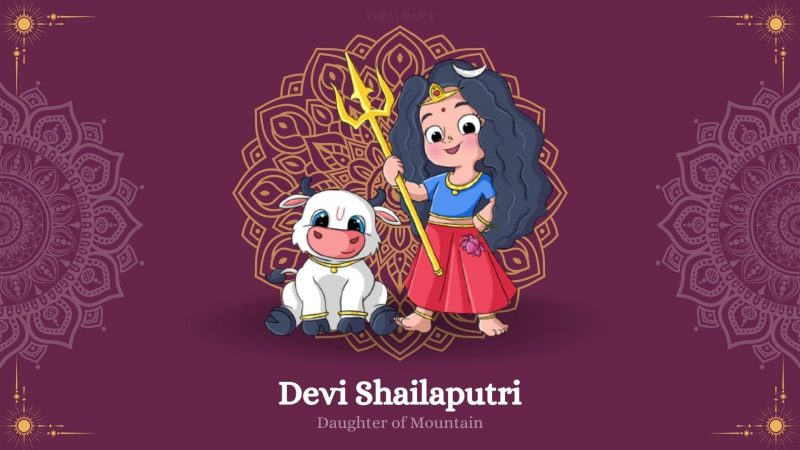
Navratri starts with the worship of the goddess Shailputri, also referred to as the Daughter of the Mountain since in Sanskrit, daughter is referred to as “putri” and mountains are referred to as “shail” (Shail+Putri = Shailputri).
She is mounted on a white bull by the name of Nandi and is holding a Trishul and a lotus in each hand. On this day, worshippers offer Goddes Shailputri pure desi ghee or meals cooked with it to receive her favour for a long and healthy life. Orange is her favourite colour.
Teaching: The first avatar shows us how to be strong. Children are capable of understanding that challenges are a part of life, but with willpower and persistence, they can overcome any difficulty.
Day 2. Goddess Brahmacharini
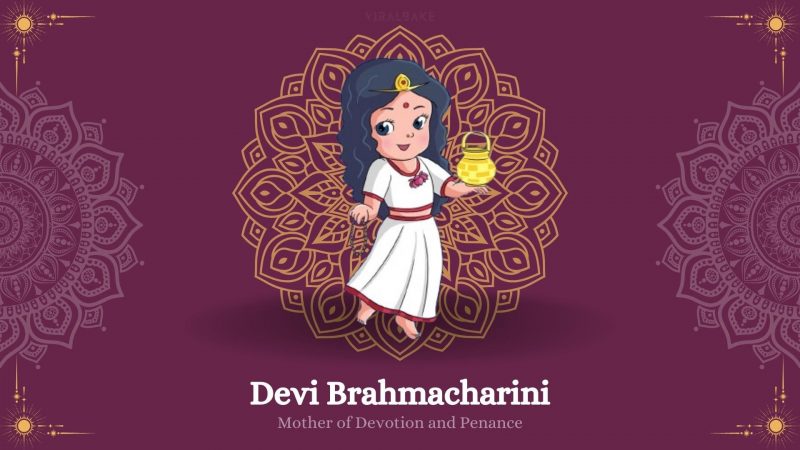
On the second day of Navratri, worshippers offer sugar-containing meals to Goddess Brahmacharini, also known as the mother of devotion and penance, to obtain her blessings. This form represents Goddess Parvati during the long period of deep meditation she underwent to appease Lord Shiv. She is dressed in white, holding a Kamandalu in her left hand and a chanting rosary (rudraksha mala) in her right. White is her favourite colour.
Teaching: This avatar encourages the value of education. Encourage your kids to be inquisitive, seek knowledge, and use what they learn in ethical ways.
Day 3. Goddess Chandraghanta

Devotees worship Goddess Chandraghanta, also referred to as the demon-destroyer, on the third day. She has ten hands, nine of which are used to handle weapons such as tridents, maces, bows, arrows, swords, bells, and waterpots.
The tenth hand is in the Abhay Mudra, which is used to bless her followers. She is called Chandraghanta because of the crescent moon on her forehead. Her favourite colour is red, and she rides a tiger. It’s said that if devotees present her Kheer, she takes away all the sufferings of her devotees.
Teaching: Children are inspired by Chandraghanta’s resilience and bravery to tackle their worries with bravery and self-assurance. It’s an excellent chance to calm their fears and educate them on how to make decisions for themselves.
Also Read: Navratri 2023: Sweet Delights for Nine Days of Navratri
Day 4. Goddess Kushmanda

The Goddess Kushmanda, often referred to as the Goddess of the Cosmic Egg, is worshipped on the fourth day. She is claimed to have created the world with her divine and radiant smile. She rides a lion and has eight hands. Devotees offer her Malpua, which is thought to be her favourite meal, during this time. Royal blue is her preferred hue.
Teaching: Children may learn to appreciate art, music, and creativity through Kushmanda’s creative spirit. Encourage them to use their imagination and assist them in doing so.
Day 5. Goddess Skandamata
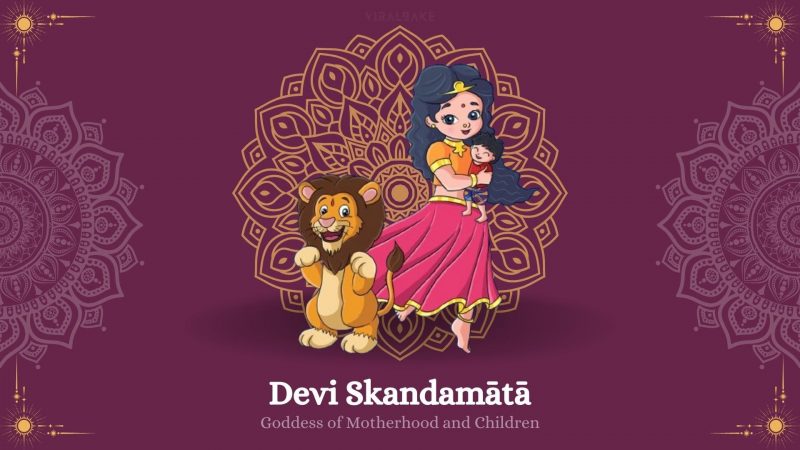
The fifth day of Navratri is dedicated to Goddess Skandmata, sometimes referred to as Panchami or the Goddess of maternity and children. She has four arms, two of which are holding a lotus, while the other two are holding a bell and the holy Kamandalu.
She has fair skin and three eyes. The goddess is known as Skandmata because she bears Lord Kartikeya or Skanda on her lap. Bananas are her preferred food, while yellow is her favourite colour.
Teaching: Skandamata, Skanda’s mother (Kartikeya), teaches us the value of family and friendship. It’s an excellent time to emphasize the value of friends and family in their lives.
Day 6. Goddess Katyayani
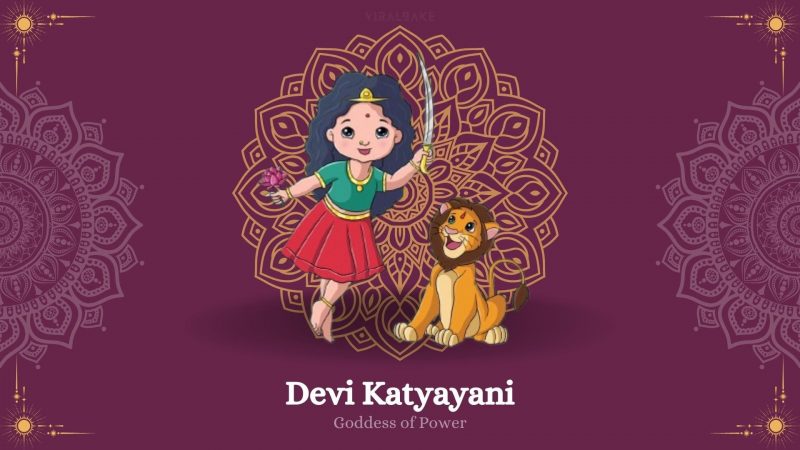
On the sixth day of Navratri, worshippers honour the goddess Katyayani, also known as the warrior goddess. She holds a sword, shield, lotus, and trident in each of her four hands. She alights a lion. Green is her favourite colour. The goddess is worshipped by devotees by receiving honey as prasad.
Teaching: This avatar signifies purity of heart and mind. Children should be taught the value of honesty, morality, and goodwill.
Day 7. Goddess Kalaratri
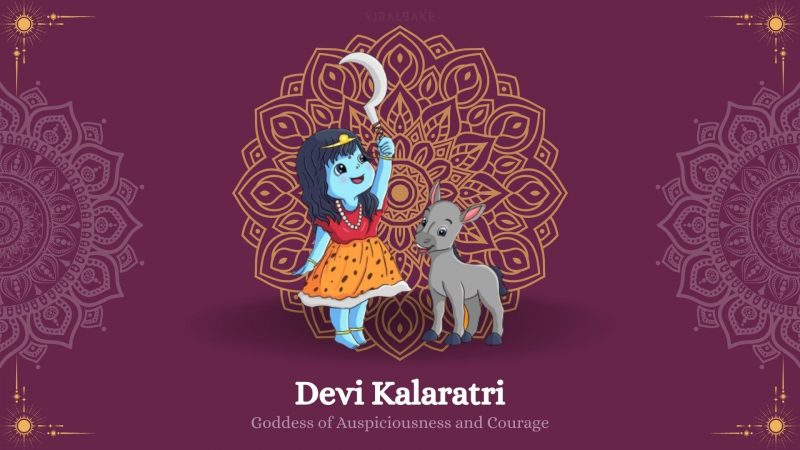
The seventh day of Navratri is devoted to Kalaratri, also known as Kali, one of the fiercest manifestations of Goddess Parvati. To defeat the demons Shumbha and Nishumbha, Kali sacrificed her skin tone and adopted a black complexion.
She has four hands, three of which are used to bless devotees—the fourth is on Abhaya and Varada Mudra. She also wields a sword, trident, and noose. Her favourite colour is grey, and when Prasad receives her blessings, worshippers present jaggery.
Teaching: The destruction of darkness is symbolized by Kalaratri’s fierce appearance. To shine brightly, children might learn to overcome their inner doubts and negativity.
Day 8. Goddess Mahagauri
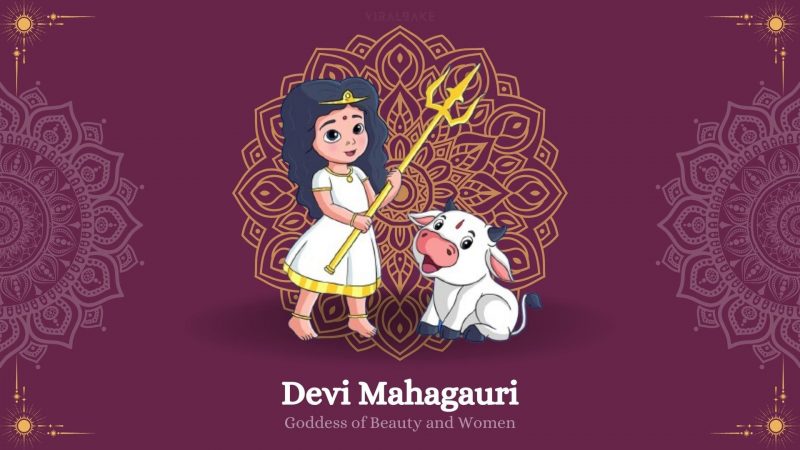
The four-armed goddess Devi Mahagauri, who mounts a bull or a white elephant and holds a Trishul and a Damru in each hand, is worshipped on Asthami, the eighth day of Navratri. Purple is her favourite color. Devotees present maa Mahagauri with coconuts.
Teaching: Lessons on patience, tranquillity, and retaining one’s calm are given by the goddess Mahagauri. These characteristics are essential in the quick-paced world of today.
Day 9. Goddess Siddhidhatri

Goddess Siddhidhatri is the last form of Goddess Durga who sits on a lotus. She has four hands, which she uses to grasp a mace, a discus, a book, and a lotus. Peacock Green is one of her favourite hues. The fierce goddess appreciates til seeds for their ability to protect people from strange occurrences.
Teaching: This last avatar inspires young people to discover their inherent talents and potential.
Also Read: Navratri Colours 2023: Welcoming 9 Days of Worship with a Palette of Different Colors and Shades
| Date | Goddess Name | Days (Tithi) | Goddess Name | Bhog | Color |
| April 9, 2024 | Goddess Shailputri | First Day (Ghatasthapana/Pratipada) | Goddess Shailputri | Ghee | Orange |
| April 10, 2024 | Goddess Brahmacharini | Dwitiya | Goddess Brahmacharini | Sugar & Fruits | White |
| April 11, 2024 | Goddess Chandraghanta | Tritiya | Goddess Chandraghanta | Kheer | Red |
| April 12, 2024 | Goddess Kushmanda | Chaturthi | Goddess Kushmanda | Malpua | Royal Blue |
| April 13, 2024 | Goddess Skandmata | Panchami | Goddess Skandmata | Banana | Yellow |
| April 14, 2024 | Goddess Katyayani | Shashthi | Goddess Katyayani | Honey | Green |
| April 15, 2024 | Goddess Kalratri | Saptami | Goddess Kalratri | Jaggery | Grey |
| April 16, 2024 | Goddess Maha Gauri | Maha Ashtami | Goddess Maha Gauri | Coconut | Purple |
| April 17, 2024 | Goddess Siddhidatri | Maha Navami | Goddess Siddhidatri | Til | Peacock Green |
People worship the nine incarnations of Goddess Durga throughout these nine days. Maa Shailputri, Maa Brahmacharini, Maa Chandraghanta, Maa Kushmanda, Maa Skandamata, Maa Katyayani, Maa Kaalratri, Maa Mahagauri, and Maa Siddhidatri are a few examples of the forms.
